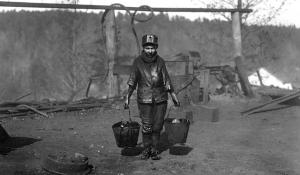
The tragedy happening in Flint, MI, right now (see People of Color Are on the Front Lines of the Climate Crisis) may have finally shone a light on environmental injustice in a way that hasn’t happened in the past. But it’s important to understand that environmental racism, including the climate racism we’ve discussed in this issue, does not begin and end with Flint.
These are not accidents. Communities of color have been targeted for decades by toxic, polluting, climate-warming facilities and are being left out of basic government protections against global warming’s worst effects and more. Purposefully. Willfully.
In fact, the same communities are being targeted multiple times. Flint itself is home to a wood-burning power plant that releases lead and other pollutants, as well as three hazardous waste sites, all near primarily Black communities.
In Perry County, AL, resident Esther Calhoun movingly explains her community’s situation in an article for the Associated Press:
My family has lived in Uniontown, Alabama, for generations. My daddy and granddaddy were sharecroppers who grew cotton, corn, and okra. The people here, mostly African-American like me, have strong ties to the land. They are proud of this piece of the country. At least they used to be. That was before Arrowhead Land ll turned Uniontown into a dumping ground for the eastern half of the nation, before Arrowhead received permission to take in tons of toxic coal ash from the disastrous 2008 coal ash spill in Kingston, Tennessee. The toxic heavy metals in coal ash arsenic, boron, cadmium, chromium, lead, mercury, selenium, and thallium have been linked to cancer and other illnesses. Children are experiencing nosebleeds, headaches, and breathing problems.
It’s not an isolated incident. Dr. Robert D. Bullard and Dr. Beverly Wright have released several studies showing that communities of color that receive one toxic facility often end up with a cluster a fact that Calhoun confirms, saying Uniontown also has a prison, a catfish-processing plant, and other polluters within its borders. Why did Uniontown become a dumping ground for the eastern half of the country?
she asks. No one thought that this poor community would fight back or that anyone would listen to us.
But they are fighting back, with a civil rights lawsuit against the landfill and the EPA. This issue is dedicated to them and all the courageous people who battle these injustices on a daily basis. Join us in pledging to do all we can to stop climate and environmental and our climate justice resources for a place to start.







